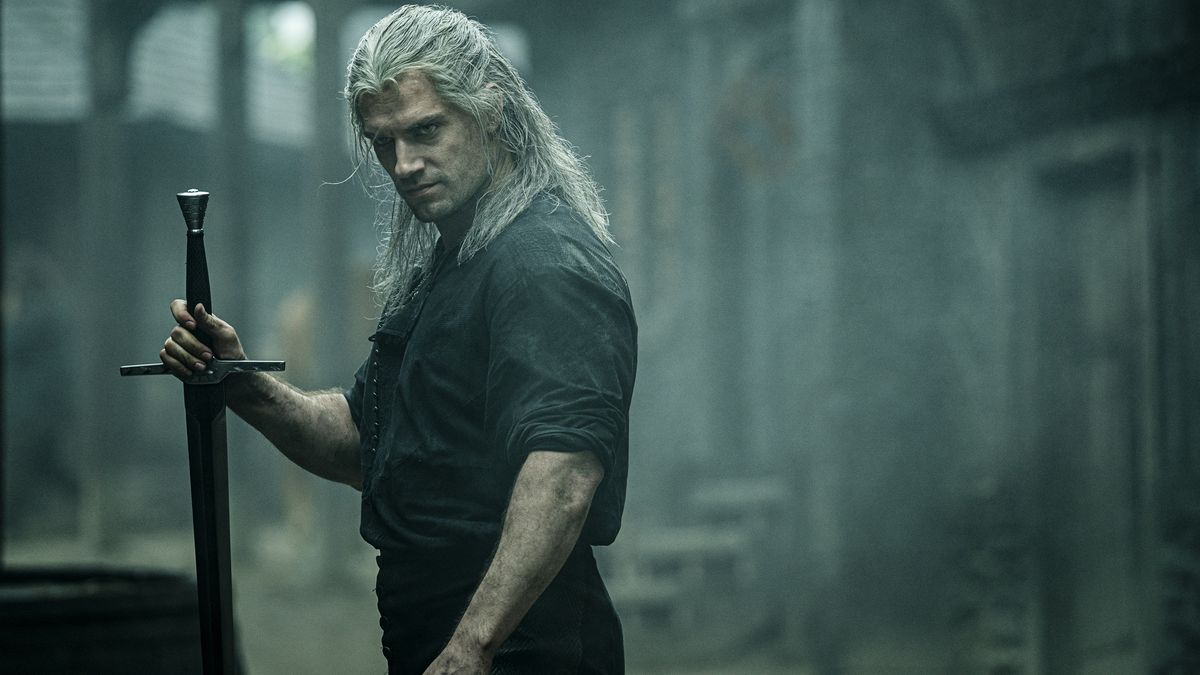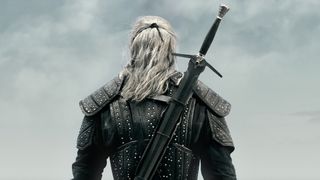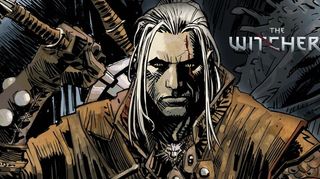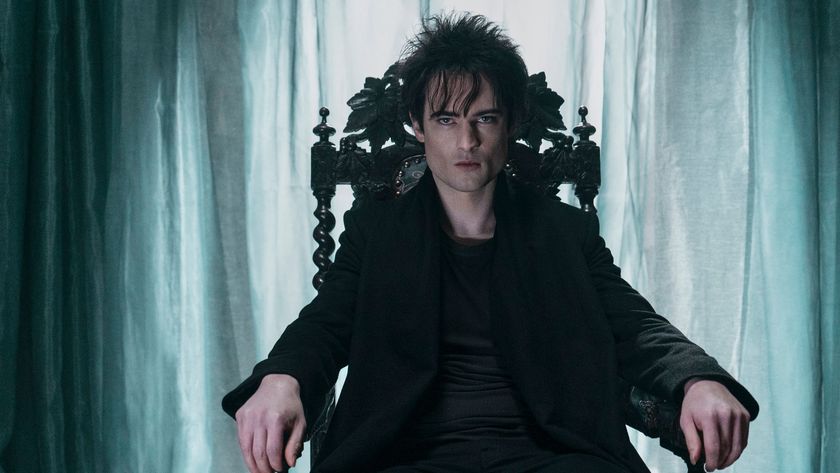How to read The Witcher books in order
If you're a fan of the hit Netflix show, read The Witcher books in order and get all up to speed ahead of the release of Season 3 next year

Getting to grips with how to read The Witcher books in order will serve all you bookworms well as you endure the long wait for The Witcher season 3 to drop on Netflix in 2023.
By far one of the best Netflix shows so far, The Witcher books are just as outstanding, so if you're a fan of the hit series staring starring Henry Cavill as Geralt of Rivia, then trust us, you're going to want to devour these fantasy novels by Polish author Andrzej Sapkowski.
The Witcher Season 2 was a huge hit for Netflix and although we don't know tons about The Witcher Season 3 yet, we're expecting it to bring more action as we follow the adventures of the witcher Geralt, a mutated monster hunter who struggles to find his place in a wicked world. But The Witcher existed for its fans long before it became a TV show.
Sapkowski created monster-hunting Geralt of Rivia as part of a magazine's short story competition all the way back in the mid-'80s and would you believe he only finished third? Not to worry, Sapkowski ended up taking all those stories and turning them into his now highly successful and much-loved fantasy book series.
When it comes to how to read The Witcher books in order, you've got a couple of options. The series includes five saga novels, two prequels and a standalone and while it's certainly not the most complicated fantasy series out there by any stretch of the imagination, and you can either follow along by publication order or by the order they come in the Continent’s chronology.
With the books falling anywhere in the region of 300 to 550 pages, you can either purchase them in paperback or hardback or, if you travel frequently, why not treat yourself to the best Kindle so that you can take the entire series with you wherever you go?
Below we talk you through how to read The Witcher books in order, as well as ranking them from best to worst based on their reader ratings on Goodreads. Let's take a look...
Get daily insight, inspiration and deals in your inbox
Sign up for breaking news, reviews, opinion, top tech deals, and more.
The Witcher books: reading order explained
- The Last Wish
- Sword of Destiny
- Season of Storms
- Blood of Elves
- Time of Contempt
- Baptism of Fire
- The Tower of the Swallow
- The Lady of the Lake
When it comes to figuring out how to read The Witcher books in order, there are a few things you need to know:
The short stories of The Last Wish come first in the chronology of The Witcher universe, and provide the ideal introduction to Geralt of Rivia, sorceresses Yennefer of Vengerberg and Triss Merigold, and singing bard Dandelion (renamed Jaskier in Netflix’s The Witcher TV series). Indeed, events in the stories ‘The Witcher’, ‘The Lesser Evil’, ‘A Question of Price’, ‘The Edge of the World’ and ‘The Last Wish’ form the basis of Geralt’s arc in the first season of the Netflix show – we meet the Striga, learn how Geralt became known as ‘the butcher of Blaviken’, and see the origin of the ‘Law of Surprise’ that ties him to Princess Ciri.
Although the standalone Season of Storms was published after the five saga novels, the events of the book take place around the same time period as The Last Wish. It’s not essential to the overall story arc, but completists may find hints of things that will later come to pass in the main saga.
The stories in Sword of Destiny, meanwhile, introduce the young Ciri. The book’s final tale, ‘Something More’, shows the fall of Cintra (a key event in the first episode of The Witcher TV show), and serves as a prequel to the quintet of saga novels.
The five saga novels, then, are Blood of Elves, Time of Contempt, Baptism of Fire, The Tower of the Swallow and The Lady of the Lake.
With much of season one of the TV series adapted from the two short story collections, the second season is where the Netflix show will get deep into adapting The Witcher saga novels.
How to read The Witcher books in release order

The first Witcher books debuted in the early '90s in Sapkowski’s native Poland, but the rest of the world was a little slow to catch on to Geralt of Rivia. It wasn’t until the English version of The Last Wish was published in 2007 – the year that the first Witcher videogame was released – that Anglophone readers got their first chance to read the books. Danusia Stok translated the first two English releases before David French took over for the remaining six.
We’ve gone with the original Polish publication order below to help you read The Witcher books in order, which differs slightly from the English-language releases – while Sword of Destiny was the first (still available) collection of Witcher short stories published in Poland, The Last Wish was the first release in English. (It’s interesting to note, however, that four of the short stories in The Last Wish had previously been published in a now out-of-print 1990 release, simply called The Witcher.)
These short story collections were followed by the five novels of the main Witcher saga, as mentioned earlier (Blood of Elves, Time of Contempt, Baptism of Fire, The Tower of the Swallow, The Lady of the Lake), and standalone novel Season of Storms.
Short story collections:
- Sword of Destiny (original Polish version: 1992/English: 2015)
- The Last Wish (Polish: 1993/English: 2007)
The Witcher Saga:
- Blood of Elves (Polish: 1994/English: 2008)
- Time of Contempt (Polish: 1995/English: 2013)
- Baptism of Fire (Polish: 1996/English: 2014)
- The Tower of the Swallow (Polish: 1997/English: 2016)
- The Lady of the Lake (Polish: 1999/English: 2017)
Standalone novel
- Season of Storms (Polish: 2013/English: 2018)
The Witcher comics explained: are they canon?

If you still haven’t seen enough of the Continent after watching the Netflix show, reading Andrzej Sapkowski’s books, and adventuring your way through the games, there’s even more Witcher storytelling out there, as Dark Horse have published various Witcher comics and graphic novels.
They’re not written by Sapkowski and although Fox Children is based on a chapter from Season of Storms, they’re set in the continuity of the games rather than the books. All are available to buy from Dark Horse as standalone comics, or collected together as graphic novels.
- The Witcher: House of Glass (by Paul Tobin and Joe Querio, published 2014)
- The Witcher: Fox Children (by Paul Tobin and Joe Querio, published 2015)
- The Witcher: Curse of Crows (by Paul Tobin and Piotr Kowalski, published 2016-2017)
- The Witcher: Of Flesh and Flame (by Aleksandra Motyka and Marianna Strychowska, published 2018-2019)
The best Witcher books: ranking the source material
Going on the reader rankings on Goodreads.com, The Witcher books are remarkably consistent in terms of quality.
Season of Storms, originally published 14 years after Sapkowski had completed his saga, comes bottom of the pile, which hints that some of the author’s magic had dissipated in the intervening years. And the five books translated by David French come ahead of the two handled by Danusia Stok, suggesting that readers might prefer French’s style.
But seeing as even the lowest-ranked title receives a highly respectable 3.95 out of 5, fantasy fans are unlikely to be disappointed by any of Sapkowski’s novels.
- Sword of Destiny – 4.35
- Baptism of Fire – 4.34
- The Tower of the Swallow – 4.32
- Time of Contempt – 4.26
- The Lady of the Lake – 4.24
- The Last Wish – 4.19
- Blood of Elves – 4.16
- Season of Storms – 3.95
Richard is a freelance journalist specialising in movies and TV, primarily of the sci-fi and fantasy variety. An early encounter with a certain galaxy far, far away started a lifelong love affair with outer space, and these days Richard's happiest geeking out about Star Wars, Star Trek, Marvel and other long-running pop culture franchises. In a previous life he was editor of legendary sci-fi and fantasy magazine SFX, where he got to interview many of the biggest names in the business – though he'll always have a soft spot for Jeff Goldblum who (somewhat bizarrely) thought Richard's name was Winter.
Most Popular






